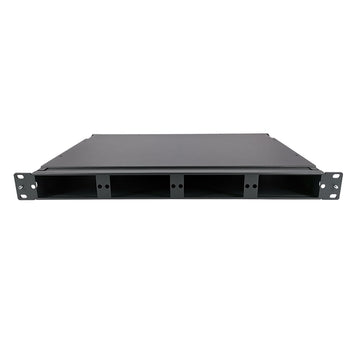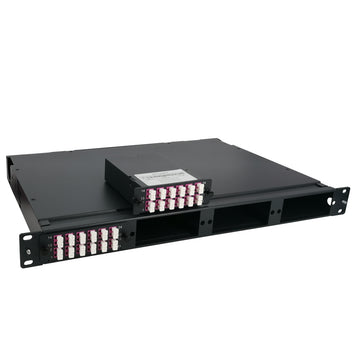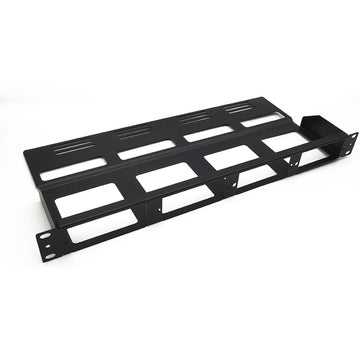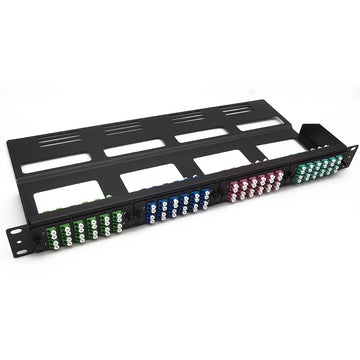PON Network: Understanding OLT, ONU, ONT and ODN
Fiber to the Home (FTTH) has started to be taken seriously by telecommunication companies around the world, enabling technologies to develop rapidly. Active optical networks (AON) and passive optical networks (PON) are the two major systems that make FTTH broadband connections possible.
Unlike active optical network, PON network does not require electrical power to send signal to customers, becoming the technology of choice of telcos. The PON Network will be introduced in this article, which mainly involves the basic components and related technology including OLT, ONT, ONU, and ODN.
What is a PON Network?
A passive optical network (PON) is a cabling system that uses optical fibers and optical splitters to deliver services to multiple access points. A PON system can be fiber-to-the-curb (FTTC), fiber-to-the-building (FTTB) or fiber-to-the-home (FTTH).
In contrast to AON, multiple customers are connected to a single transceiver by means of a branching tree of fibers and passive splitter/combiner units, operating entirely in the optical domain and without power in a PON architecture.
A PON system consists of optical line termination (OLT) at the communication provider’s end and a number of optical network units (ONUs) at the user’s end. The term "passive" simply means that there are no power requirements while the network is up and running.
There are two major current PON standards: Gigabit Passive Optical Network (GPON) and Ethernet Passive Optical Network (EPON). Their topology structures are basically the same. As the first choice in many FTTH deployment scenarios, the PON solution has several prominent benefits:

Why PON is the Telcos’ Top Choice?
Almost all the telecom companies in the world use this kind of network to deliver services to their clients because of the reliability of this type of network. As the first choice in many FTTH deployment scenarios, the PON solution has several prominent benefits:
- Easy and cost-effective to install
- Lower Power Consumption
- Higher-level Securityand requires almost no maintenance
- Higher Bandwidth
- Immune to electromagnetic interferences
- Uses cables that can be installed in all kinds of environments and with small diameter, among many other advantages.
As it is totally in fiber optic, the PON Network can cover distances of 100Km without regenerating or amplifying the signal. This allows long distances can be covered using the same cabinet or the same technical room.
PON Structure and Components
In a Gigabit Ethernet Passive Optical Network (GEPON) system, there are an optical line terminal (OLT) at the service provider's central office and a number of optical network units (ONUs) or optical network terminals (ONTs) near end users, as well as the optical splitter (SPL). In addition, the optical distribution network (ODN) is also used during the transmission between OLT and ONU/ONT.
- Optical Line Terminal (OLT)
An optical line termination (OLT), also called an optical line terminal, is a device which serves as the service provider endpoint of a passive optical network. It provides two main functions:
- to perform conversion between the electrical signals used by the service provider's equipment and the fiber optic signals used by the passive optical network.
- to coordinate the multiplexing between the conversion devices on the other end of that network (called either optical network terminals or optical network units).
- Optical Network Unit (ONU) / Optical Network Terminal (ONT)

- Optical Distribution Network (ODN)
ODN, an integral part of the PON system, provides the optical transmission medium for the physical connection of the ONUs to the OLTs. It is usually composed of ODF rack, optical fiber cable, optical joint closure(FOC), optical distribution cabinet(ODC, FDH), optical connector, optical splitter, fiber distribution box(FDB), terminal box (FTB)and other supporting equipment. Its reach is 20 km or farther. The ODN specifically has five segments which are feeder fiber, optical distribution point, distribution fiber, optical access point, and drop fiber. The drop fiber connects the optical access point to terminals (ONTs), achieving optical fiber drop into user homes. In addition, the ODN is the very path essential to PON data transmission and its quality directly affects the performance, reliability, and scalability of the PON system.
Types of Technologies that Use the PON Concept
There are different technologies that use the PON network concept:
- APON: Asynchronous transfer mode or ATM, it was the first PON Standard (ITU G983), mainly used in enterprise networks with downstream 1,25Gb/s and Upstream 622Mb/s
- BPON: Broadband PON. It has introduced the Wave division multiplexer (WDM), which allows several wavelengths and services (TV, Data, etc) in the same fiber.
- EPON or GEPON: Gigabit Ethernet PON. It uses Ethernet protocol in the data packages. The communication is synchronous 1,25Gb/s downstream and Upstream.
- GPON: Gigabit capable PON. Asynchronous communication 2,5Gb/s downstream and 1,25 Gb/s Upstream. Over time were developed several technologies using the GPON base, increasing the communication speed, changing the wavelengths used. Some of these variations keep the asynchronous velocity (XG-PON, 25G-PON, NG-PON) and some changes to synchronous (XGS-PON, 25GS-PON).
All these technologies operate as passive optical networks and the main differences between them are in how they support and transmit wavelengths and overall speed.
Conclusion
OLT, ONU or ONT, and ODN are the main components in a GEPON system, which have been widely used in the FTTH applications by far. The reduced cabling infrastructure (no active elements) and flexible media transmission contribute to the passive optical networks more ideal for home Internet, voice, and video applications. Additionally, passive optical networks can also be applied in college campuses and business environments, providing cost-effective solutions. In fact, PON has appeared for many years in the telecommunication field. Now PON is finally making its way into the enterprise, providing opportunities for customers to deploy new infrastructures or new constructions. With the development of technology, the network PON type mainly focuses on the commercial market. Especially, it performs well in healthcare, college campuses, hotels, and office buildings. As PON technology has continued to improve, the potential applications have expanded as well.
All these equipment are provided in LightOptics and have the characteristic of high integration, flexible adaption, reliability. For more information on PON network or other service, please email to sales@lightoptics.co.uk. Thanks!












